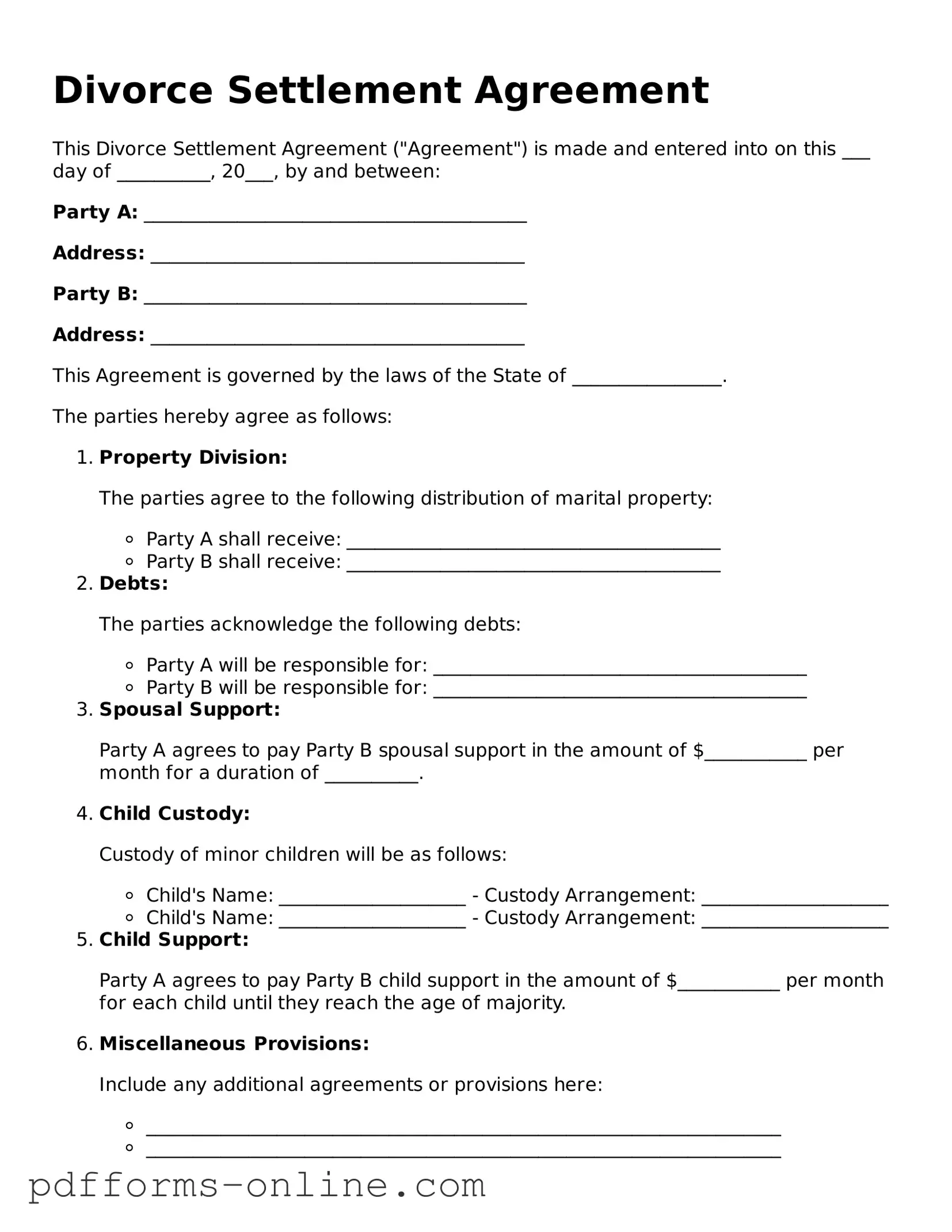Divorce Settlement Agreement
This Divorce Settlement Agreement ("Agreement") is made and entered into on this ___ day of __________, 20___, by and between:
Party A: _________________________________________
Address: ________________________________________
Party B: _________________________________________
Address: ________________________________________
This Agreement is governed by the laws of the State of ________________.
The parties hereby agree as follows:
- Property Division:
The parties agree to the following distribution of marital property:
- Party A shall receive: ________________________________________
- Party B shall receive: ________________________________________
- Debts:
The parties acknowledge the following debts:
- Party A will be responsible for: ________________________________________
- Party B will be responsible for: ________________________________________
- Spousal Support:
Party A agrees to pay Party B spousal support in the amount of $___________ per month for a duration of __________.
- Child Custody:
Custody of minor children will be as follows:
- Child's Name: ____________________ - Custody Arrangement: ____________________
- Child's Name: ____________________ - Custody Arrangement: ____________________
- Child Support:
Party A agrees to pay Party B child support in the amount of $___________ per month for each child until they reach the age of majority.
- Miscellaneous Provisions:
Include any additional agreements or provisions here:
- ____________________________________________________________________
- ____________________________________________________________________
This Agreement constitutes the entire understanding between the parties concerning the subject matter herein and supersedes all prior negotiations and agreements.
IN WITNESS WHEREOF, the parties have executed this Agreement as of the day and year first above written.
______________________________________
Party A Signature
______________________________________
Party B Signature
______________________________________
Notary Public
